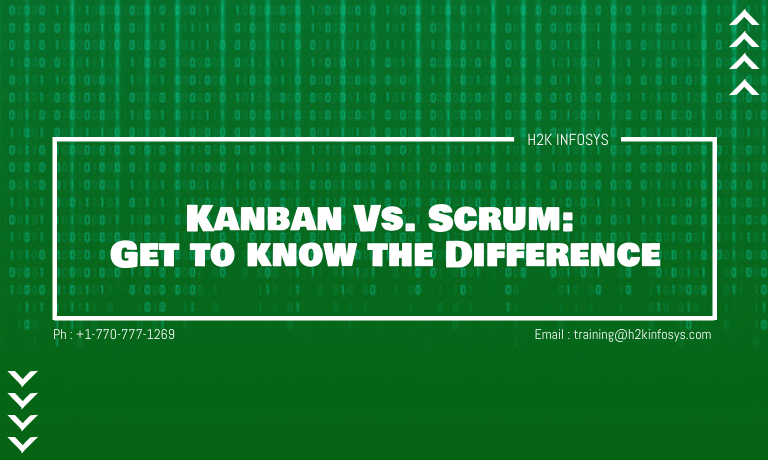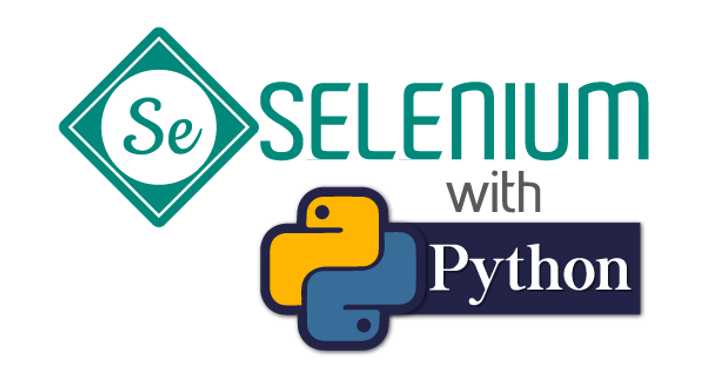What’s the Kanban?
Kanban is a visual work management system. It visualizes both the procedure and the real work that goes into the process. The key goal of Kanban’s implementation is to identify and address possible bottlenecks in the process. The aim of Kanban is that the workflow can continue efficiently at an optimum pace.
What’s the Scrum?
Scrum is an agile framework that can deliver business value in the quickest time frame. It inspects the real functioning software quickly and frequently. It stresses the collaboration and iterative development of the software. It aims to release new software every 2-4 weeks.
Why should we utilize Scrum?
Scrum methodology can be used to handle projects in every industry, as well as in daily life. The development team becomes more Agile as a result of using Scrum and learns to adapt rapidly and respond to unexpected changes.
Besides, Scrum fixes the difficulty of work by making information clear. They allow the team to evaluate and adapt based on current conditions, rather than the predicted conditions. This encourages team members to deal with common challenges and uncertainty arising from constantly changing criteria.
Why should we utilize Kanban?
The Kanban method is intended to encounter the minimum resistance possible. This enables continual small incremental and progressive improvements to the current process. It also aids in the enhancement of production, lead time, and quality.
When should we utilize Scrum?
In a project where the requirements change frequently, the Scrum technique is used. It operates on the concept of a self-organizing, cross-functional team. The Scrum Framework typically deals with the fact that circumstances are going to change rapidly or much of the time not understood at the outset of the project.
In Scrum, low-level specifications are specified only at the beginning of time. Modifications and optimizations of products, requirements, and procedures are an important part of the project in this methodology.
When should we utilize Kanban?
Kanban boards provide a visual representation of the work being done on a software development project. This allows members of the team to see how development is progressing. It also aids them in comprehending complex data such as processes and uncertainties involved with completing work on time.
Kanban Boards prove successful as they allow team members to become more involved while reducing the amount of workload burden that project managers and team members feel during the lifecycle of the project.
If the team has a process that performs well but could be improved, the Kanban software development approach could be used. The Kanban process allows them to continuously enhance all of their tried-and-true processes.
Scrum Method
The Scrum method helps team members to analyze what is successful and what is not successful. Communication is a key aspect of the scrum method. It takes place through meetings called Events. Scrum Events shall include:
Daily Scrum:
The Daily Scrum is a short meeting that takes place every day at the same time and in the same location. After each meeting, the team will discuss the progress accomplished on the previous day and plan what work needs to be done in the next 24 hours. During the regular meeting of the scrum team, participants will talk about any issues that could become an obstruction to the success of the project.
Sprint Planning Meeting
Sprint refers to the duration during which the job must be done, up to 30 days. Everyone should help to set targets in this sprint plan meeting. At the end of the day, at least one software increment should be made.
Sprint Retrospective
The Sprint Retrospective meeting will take place at the close of the Sprint. In this session, everybody is reflecting on the Sprint process. A team-building process can take place at this stage. Continuous improvement is a key objective of the Sprint Retrospective.
Kanban Method
With the Kanban approach, everything is steadily changing, whether it is software production, staff, promotion, marketing, procurement, etc. The Kanban Method follows a series of principles for handling and optimizing workflows.

Four rules of the Kanban Method are listed below:
1. Visualize Work
Having a visual model of the job and process helps to track the processes moving through the kanban system.
2. Limiting work in process
It enables team members to reduce the number of time items taken to travel across the Kanban system.
3. Focus on flow
Using work-in-process constraints and designing team-driven policies, you can refine the Kanban method to increase the smooth flow of work.
4. Continuous Improvement
When a Kanban system is implemented, it serves as a foundation for ongoing improvement. It assists teams in evaluating their efficiency by analyzing tracking flow, performance lead times, and other factors.
Scrum Vs. Kanban
| Scrum | Kanban |
| Scrum emphasizes planning. Sprint planning begins with sprint planning and concludes with a sprint retrospective. Many sessions are held to ensure that the team is on the same page about the next steps, priorities, and lessons learned from past sprints. | Kanban is flexible and adaptable to changing circumstances. It implies that there is less rigidity and that situations are more likely to change regularly. |
| It is recommended that time measurements taken during sprints be collected. | Kanban proposes that graphs provide an analysis of the team’s success over time. |
| Scrum no longer requires teams to commit. It’s all about the sprint targets and forecasts now. | Timeboxing and forecasting are the basis for Kanban. |
| Scrum places a strong emphasis on planning, so prediction is critical. | Kanban does not have compulsory prediction criteria. |
| Every individual has a specific position and set of responsibilities. | No function in terms of individual obligations is so flexible. |
| The length of the iterations/Sprints is set. The duration varies between 2 weeks to 1 month. | Kanban is not dependent on the duration of time. This is measured with respect to cycle times. |
| Teams are expected to put in a certain amount of effort. | Commitment is not mandatory and is voluntary for teams. |
| In this approach, cross-functional teams are critical since they can deal with any disturbance that can create a bottleneck in the production of applications. | It’s important to have a specialized team. |
| It is not necessary to apply objects to the ongoing iteration. | If extra capacity is available, new items can easily be added. |
| Just one team owns a sprint backlog. | Multiple teams will share the kanban board. |
| The deliverables are decided by the sprints that must be completed and ready for evaluation. | Products and processes are supplied on a required basis consistently. This means that simultaneous testing and review are carried out. |
| The backlog is the focus of the Scrum software development process. | The Kanban approach concentrates entirely on the dashboard process. |
| Each team member has a particular task as the Scrum Master decides deadlines, the Product Owner sets priorities and targets, and the team members carry out production work. | No predefined team positions are available. However, a project manager will also be there; the team is encouraged to cooperate and work together. |
| Most of all for projects with shifting priorities. | Ideal for teams with well-defined goals that are unlikely to shift over time. |
| Measures performance by sprint speed. | Measure production with cycle time or the exact time it takes to finish one part of a project. |
| Scrum needs a full transition from the traditional model to the Agile Scrum model that will be implemented by the team. | Kanban does not allow for large-scale project improvements. |
| It is the optimal approach for projects with a broad range of priorities. | For teams with clear goals, this is the best option. |
| In Scrum, the whole team is committed to working together and completing the challenge of providing quality development work. | Teams work together to accomplish results and shorten the time it takes to complete the process. As a result, the shortest period is one of the most important metrics of performance. |
| Scrum insists on the timetables; additional elements cannot be added to existing iterations. | Since Kanban does not have fixed timeframes, it is more iterative. As a result, new items can be added regularly as new space becomes available. |
| The overall work is performed by batches/Sprints. | The entire project is based on single-threaded work object flow movement. |
| Scrum Master is acting as a problem solver. | Kanban inspires everyone on the team to be a mentor and to share responsibilities. |
| Scrum is prescribing time-boxed iterations. | Kanban insists on allocating a different amount of time for each iteration. |
| Scrum helps businesses save time and resources. | Continuous development, growth, and efficiency are the main goals of the Kanban system. |
| Achieve stable and effective performance coordination at all stages. | Because of the tactile design of Kanban boards, team members are far more likely to achieve their objectives. |
| The project is coded and reviewed during the sprint review. | Because of the tactile design of Kanban boards, team members are far more likely to achieve their objectives. |
| It’s easier to respond to constant shifts due to short sprints and regular feedback. | Kanban is configured for a continuous, consistent output; however, large shifts in consumer demand will cause Kanban to fail. |
| The overall cost of the project is small, which may lead to a faster and cheaper outcome. | The actual project cost would never be accurate if a task is not correctly estimated. In these situations, the task can be divided into many sprints. |
| This technique needs only professional team members. So, if the team is made up of individuals who are not experts, the job cannot be finished on schedule. | Since no fixed timeframes are assigned to each phase, team members have no idea how long they will spend on each phase. |
| The Agile Scrum approach makes it possible to produce a reliable product at a planned time. | It is optimized for daily, steady output, with large shifts in consumer demand that may cause Kanban to decline. |
| If a team member leaves the team, the project schedule will never be disturbed. | If any of the team members leave during development, the development of the project will be adversely affected. |
| Daily meetings often irritate the members of the team. | An out-of-date Kanban board will cause problems during the development process. |
| Large projects can be quickly broken into easily manageable sprints. | It just fits well for small groups, but it is not appropriate for big groups. |
Conclusion:
- Scrum is an agile framework that helps people to concentrate on generating market value in the shortest amount of time possible.
- Kanban is a visual management framework for software development.
- The Kanban approach encourages continuous improvement, resulting in increased effectiveness and reliability.
- Scrum focuses on the backlog, while Kanban focuses on the dashboard.
- The Scrum Master works as a problem-solver.
- Kanban invites each team member to be a mentor and to share responsibilities.
- Scrum specifies time-boxed iterations.
- Kanban emphasizes allocating a different amount of time for each iteration.




























